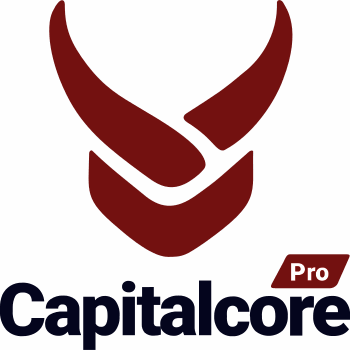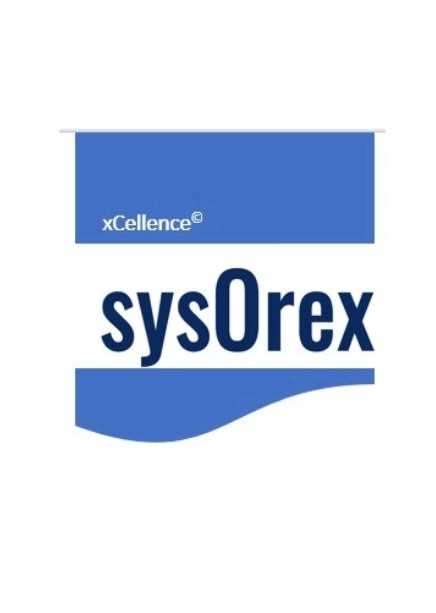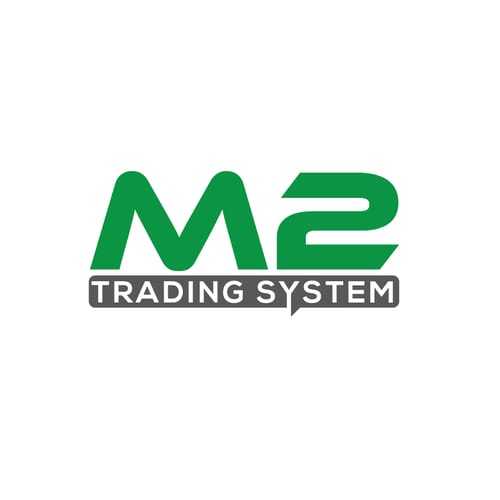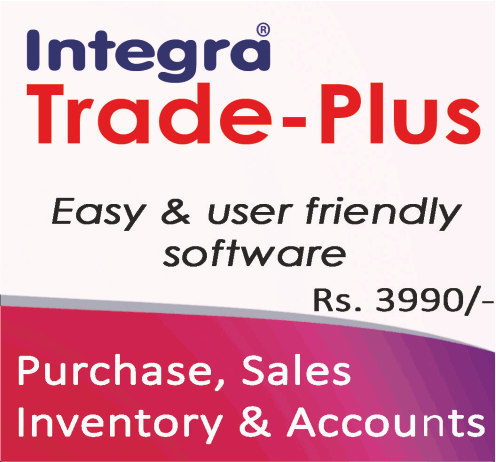What Is Trading Software?
Trading software is a sophisticated instrument that allows traders to evaluate the market, execute trades, and manage their capital. It serves as a marketplace for buying and selling financial items such as stocks, currencies, and commodities in order to generate profits. This software may be used by both new and experienced traders because it provides a variety of features and tools to help with decision making and trading success.
Essentially, trading software is a computer platform that connects traders to financial markets. It provides consumers with real-time market data, news, and charts, which are critical for making sound trading decisions. Some software also includes complex features like technical indicators, bespoke algorithms, and charting tools to assist traders in analyzing market trends and patterns, allowing them to spot prospective opportunities.
One of the main advantages of trading software is its speed and convenience. It allows traders to place trades swiftly and efficiently, removing the need for manual operations like calling brokers or physically placing orders. This also lowers the possibility of human error, ensuring trade precision. Furthermore, trading software frequently includes risk management tools like stop-loss and limit orders to help traders reduce possible losses and preserve their money.
It may also include portfolio management and performance tracking functions, allowing users to monitor their trading behavior and make more informed investment decisions. When looking for trading software, it's critical to evaluate your trading style and objectives. Some software may be designed for active traders, while others are better suited to long-term investors. Likewise, the software's pricing structure and associated costs should be considered.
What Are The Recent Trends In Trading Software?
In recent years, the trading software business has experienced a surge of innovation and technological breakthroughs. This has resulted in a substantial shift in traders' approaches to the market, with enhanced efficiency, precision, and accessibility. One of the most significant recent advances in trading software is the proliferation of artificial intelligence (AI) and machine learning (ML) algorithms.
These technologies have transformed the trading sector by delivering automated and data-driven solutions for traders. AI and ML can analyze massive volumes of data in real time, detect trends, and create predictions, allowing traders to make more informed decisions while reducing human error. Another trend that has gained traction in the trading software market is the utilization of cloud solutions.
This enables traders to access their trading platform from any location, at any time, and using any device. Cloud-based trading software also provides improved security and easier connection with other platforms, making it a popular choice among traders. The rise of mobile trading is yet another market-changing trend. With the growing popularity of smartphones and other mobile devices, trading software developers have focused on developing user-friendly and feature-rich mobile applications.
These apps enable traders to monitor their investments and conduct trades on the fly, giving them greater flexibility and convenience. In addition, the need for bespoke and personalized trading software has grown in recent years. Traders increasingly look for software that may be customized to their individual trading techniques and objectives.
This has resulted in the creation of increasingly complex and configurable trading systems that offer comprehensive charting and analyzing capabilities. Finally, the integration of social and copy trading has become a prominent trend in the trading software industry. These capabilities enable traders to communicate with other traders, share insights, and even replicate successful transactions.
This not only fosters a sense of community, but also allows beginner traders to learn from experienced traders. With these recent trends, the trading software business is growing rapidly and shows no indications of slowing down. As a buyer, it is critical to evaluate these trends and select trading software that meets your individual trading requirements and ambitions.
Benefits Of Using Trading Software
Trading software, often known as stock market software or investing software, is a powerful instrument that can help you improve your trading results. It is intended to help traders make informed judgments by evaluating market data and giving real-time updates.
Let's explore, we will look at the advantages of utilizing trading software and how it can help you enhance your trading game.
1. Automation & Efficiency: One of the most significant benefits of using trading software is the potential to automate processes and increase productivity. Trading software uses algorithms and modern technology to execute transactions, monitor market movements, and spot possible opportunities faster and more precisely than a human trader. This allows traders to save time and effort while focusing on other areas of their trading approach.
2. Real-Time Data And Analysis: Trading software gives traders real-time access to market data and analysis, allowing them to gain a full grasp of current market circumstances. This enables traders to make faster and more informed decisions, lowering the likelihood of costly errors. Trading software may track numerous assets and markets at the same time, allowing traders to discover patterns and make predictions based on past data.
3. Removes Emotion And Human Error: Human emotions, such as fear and greed, can frequently obscure judgment and lead to rash and foolish trading judgments. Trading software reduces these emotions by adhering to predetermined rules and carrying out deals based on data and algorithms. This decreases the possibility of human error and promotes a disciplined trading style.
4. Backtesting And Simulation: Trading software helps traders to test their ideas against previous market data. This capability, known as backtesting, is critical for determining the effectiveness of a trading strategy. Traders can also use simulation tools to analyze how their strategy would have worked in real time, which will help them better grasp potential outcomes and dangers.
5. Customization And Flexibility: Trading software provides a wide number of customization possibilities, allowing traders to adjust it to their unique requirements and tastes. From risk factors to indicator selection, traders may tailor their program to their trading style and objectives. Furthermore, many trading software alternatives are available on many devices, giving traders the ability to trade from anywhere.
Important Factors To Consider While Purchasing Trading Software?
When choosing trading software, consumers should examine a number of crucial factors. This will allow them to make an informed selection and select software that suits their specific requirements and ambitions.
We will go over the essential criteria that buyers should bear in mind while looking at different trading software solutions.
1. Sort Of Trading: The first and most important consideration is the sort of trading you intend to perform. Are you seeking for software that enables day trading, swing trading, or long-term investing? Depending on your trading strategy, you may require different features and tools in your software.
2. Functionality And User Experience: Before making a purchase, thoroughly evaluate the software's functionality and user experience. This encompasses the simplicity of use, navigation, and general user experience. To improve your trading experience, it should be intuitive and easy to use.
3. Technical Analysis Tools: Those who rely on technical analysis should choose software that includes a variety of technical indicators and charting possibilities. This will enable you to evaluate market patterns and make sound trading selections.
4. Real-Time Data And Automation: In today's fast-paced trading environment, access to real-time data and automation is critical. Make certain that the software you select delivers accurate and up-to-date market data, as well as automation tools such as stop-loss and limit orders.
5. Customization Options: Each trader has a distinct trading style and technique. As a result, it is critical to have the ability to configure the program to meet your individual requirements and preferences. This could include creating custom watchlists, alerts, and layouts.
6. Compatibility And Integration: Traders now use a range of devices and platforms to conduct their transactions. Make sure the trading software you chose is compatible with your preferred devices and integrates with other platforms you use.
7. Data Security: In the trading business, data security is critical. Choose software with strong data encryption and a reputable track record for security.
8. Customer Support: No matter how complicated the product is, you may require technical assistance or have a question. Consider the quality of customer assistance provided by the software vendor to ensure you have a safety net in case of problems.
What Are The Key Features To Look For In Trading Software?
When it comes to navigating the world of online trading, having the appropriate trading software may make a huge difference. With so many alternatives available, customers need to know what aspects to look for when making a purchase.
Here are the important characteristics to look out for while buying for trading software.
1. User-Friendly Interface: Look for trading software that has a simple and intuitive interface. This will make it easier for you to navigate and use the platform efficiently.
2. Real-Tme Market Data: The capacity to obtain real-time market data is critical for successful trading. Look for software that delivers current information to assist you make informed judgments.
3. Modification Options: Because each trader has their own unique approach, it's critical to choose software that allows for modification. This could include bespoke charts, indicators, and layouts to match your trading style.
4. Technical Analysis Tools: Look for software that provides a wide range of technical analysis tools, including charting, trend indicators, and risk management tools. These features can help you evaluate market patterns and make more informed trading decisions.
5. Order Execution: The speed and efficiency of order execution have a significant impact on your trading outcomes. Look for software that provides quick and dependable order execution to avoid missing out on trading possibilities.
6. Backtesting Capability: Backtesting lets you test your trading technique against historical data. Look for tools with strong backtesting features to assess the efficacy of your trading strategy.
7. Security: Online trading increases the risk of cybersecurity risks. Look for software that includes strong security features like data encryption to safeguard your personal and financial information.
8. Mobile Compatibility: For traders who are constantly on the move, having the ability to access trading software from a mobile device is critical. Look for software that works with both Android and iOS devices.
9. Customer Support: If you have any technical problems or queries concerning the software, you should be able to contact a reputable customer service representative. Look for software that provides various support channels, including phone, email, and live chat.
10. Pricing: Finally, analyze the software's pricing. While some may be more expensive, it's crucial to compare the cost against the features and benefits to ensure you're getting the most bang for the buck.
Why Do Businesses Need Trading Software?
Trading software is an effective tool for firms who want to improve their trading procedures, boost productivity, and make better investment selections. This specialist software is meant to handle complex financial transactions and provide strong data analysis to assist organizations in staying current with market trends and movements. So, why do firms require trading software?
Let's take a closer look at the main causes.
1. Automation Of Trading Processes: One of the most significant advantages of trading software is its capacity to automate manual operations. This reduces human error while saving time and resources, allowing firms to focus on more critical areas of their operations.
2. Real-Time Market Updates: Gone are the days of depending on old data. Trading software delivers real-time alerts on market trends, news, and volatility, giving organizations the competitive advantage they require to make sound decisions.
3. Advanced Data Analysis: Trading software uses sophisticated algorithms to evaluate large volumes of data and deliver significant insights. This enables organizations to make data-driven decisions while minimizing risk.
4. Accessibility And Flexibility: In today's fast-paced business world, the ability to trade on the go is critical. Trading software provides accessibility and flexibility, allowing organizations to stay connected and conduct deals from anywhere and at any time.
5. Customization And Integration: Every organization has distinct trading requirements. Businesses can use trading software to tailor their trading tactics and combine it with other tools and platforms to create a streamlined process.
6. Risk Management: Trading is inherently dangerous, but with the right trading software, organizations may successfully manage these risks. The software delivers real-time risk assessment and notifications, allowing firms to make the necessary changes to their strategies.
How Much Time Is Required To Implement Trading Software?
The time required to deploy trading software varies based on a number of factors, including the software's complexity, the size of your firm, and the level of customization necessary. However, properly implementing trading software might take anything from a few weeks and many months. The first stage in installing trading software is to evaluate your present trading procedures and identify opportunities for improvement using the program.
This could include conducting a full audit of your trading activities and soliciting feedback from key stakeholders. Once you have a clear grasp of your trading requirements, the following step is to choose the appropriate trading software for your firm. This procedure can take some time as you carefully consider many possibilities and decide which one best meets your needs. Once you've decided on a trading software, the actual implementation process begins.
This often includes integrating the software with your existing systems and processes, creating user accounts, and tailoring the software to your specific trading requirements. Depending on the software's complexity and level of customization, this stage can take anywhere from a few days to a few weeks. After the program has been fully built, rigorous testing is required to confirm that all features perform as intended and that it integrates seamlessly with your existing procedures.
This could include executing test transactions or simulations to detect and resolve any difficulties. Finally, staff training is required to guarantee that all users understand the software and its functions. This may include instruction on how to use the software, evaluate data, and resolve frequent problems. Depending on the size of your organization and the number of users, this stage could take a few days or several weeks.
What Is The Level Of Customization Available In Trading Software?
When it comes to trading software, one of the most important things that purchasers should consider is the level of customisation available. This refers to the capacity to customize the software based on your individual trading preferences and requirements. Most trading software allows for some level of customisation, although to varying degrees. Some software may simply allow for minimal adjustments, such as changing chart colors or selecting from a few pre-set indicators.
On the other hand, there are extremely advanced trading systems that provide a variety of customizing choices. The level of customisation offered is largely determined by the sort of trading program you use. For example, web-based trading platforms may provide less customization choices than standalone software that can be downloaded and installed on your computer. In general, the more complicated your trading techniques, the more customisation you'll require.
This is particularly true for day traders and those who employ advanced technical analysis techniques. In such circumstances, it is critical to have access to capabilities that enable flexible charting, indication customisation, and the ability to construct and maintain unique trade templates. For new traders, a user-friendly interface and the option to change simple parameters may be enough.
This contains options such as establishing price alerts and defining trade entry and exit locations. It is also necessary to consider the learning curve associated with customization. If the software is too difficult to navigate and adjust, it may not be appropriate for new traders. However, for experienced traders, having a highly configurable trading platform can significantly improve their trading experience and efficiency.
Which Industries Can Benefit The Most From Trading Software?
Trading software has grown in popularity in recent years, as more sectors recognize the benefits it provides. This sophisticated tool may significantly increase trade efficiency and accuracy, making it a crucial investment for organizations of all sizes. The banking business is one that stands to benefit tremendously from trading software.
With the stock market's rapid changes and the necessity for quick judgments, Trading Software can provide traders with real-time data and analysis, allowing them to make more educated and timely decisions. This can improve earnings while lowering risks for financial institutions. The retail industry can also tremendously benefit from Trading Software. With the rise of e-commerce and internet selling, retail enterprises face fierce competition.
Trading software can provide retailers with significant insights about consumer behavior, market trends, and inventory management, allowing them to make more strategic decisions that increase sales and customer happiness. Additionally, the energy industry can profit from Trading Software. With ever-changing energy market pricing and fluctuations, energy businesses must regularly monitor and analyze data in order to make lucrative deals.
Trading software can aid by offering advanced capabilities for price forecasting, risk management, and automated trading, allowing energy companies to remain ahead of the competition and optimize earnings. Furthermore, the application of Trading Software is not restricted to these businesses. It can also help businesses in agriculture, manufacturing, and logistics, among others. The software's capacity to speed trading procedures, decrease human error, and improve decision-making makes it an invaluable tool to any company that buys and sells items.
Conclusion
Finally, selecting the appropriate trading program can have a significant impact on your trading results. Consider criteria such as platform features, accessibility, customer service, and cost to limit down your selections and find the best fit for your trading requirements. It is also critical to conduct extensive research, read reviews, and even test demo versions before making a final decision.
Keep in mind that the program should be easy to use, dependable, and well-equipped with tools to assist you in making informed and lucrative trades. Finally, the aforementioned considerations, together with your trading goals and preferences, should help you make an informed and satisfactory buy. So, take your time, analyze all options, and select a trading software that will improve your trading experience.






















